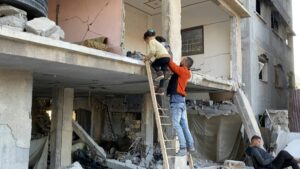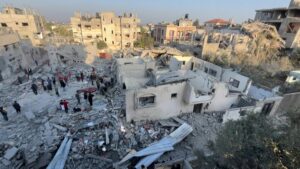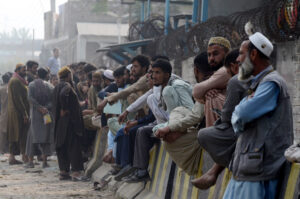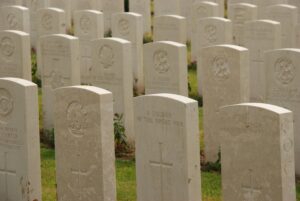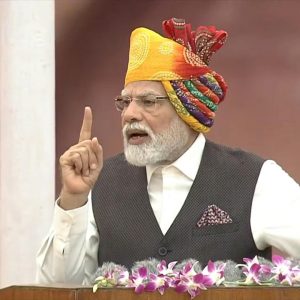History of diplomatic tensions between India and Canada
Canada denied visa to Indian security officials after finding that a military officer implicated in the murder of a senior Kashmiri lawyer had been facilitated entry into Canada
By Iftikhar Gilani
Diplomatic tensions between India and Canada have taken new proportions in recent days with the expulsion of diplomats and retaliatory measures. They began with Canadian Prime Minister Justin Trudeau’s assertion that there were “credible allegations” of Indian government involvement in the June murder of prominent Canadian Sikh leader Hardeep Singh Nijjar.
This coincided with the expulsion of Indian diplomat Pavan Kumar Rai, head of the Canadian station of the Indian intelligence agency Research and Analysis Wing (RAW).
The dispute between the two countries over the role of Indian security agencies and their human rights record is not new.
A major dispute had already erupted in 2010 when Canada had started denying visas to Indian security forces who had served in Jammu and Kashmir.
Canada had decided to take this step after it was discovered that Major Avtar Singh, an army officer accused of killing a leading Kashmiri lawyer, Jalil Andrabi, in 1996, had been facilitated entry into Canada by the Indian government despite having an arrest warrant out for him.
A court in Srinagar had issued an arrest warrant against Maj. Singh.
The slain lawyer’s relatives believe New Delhi facilitated Singh’s migration to Canada by issuing him a fake passport – an allegation that also goes to the Delhi-based Canadian High Commission, which had issued him a visa.
A state high court bench had then directed the police to arrest the officer so that he could be tried. It had ordered that his passport be confiscated and a ban on foreign travel be imposed. But before the Jammu and Kashmir Police could arrest him, he had left for Canada.
Embarrassed Canada pulls itself together
Embarrassed by these developments, the Canadian High Commission in New Delhi had stopped issuing visas to Indian security forces serving in Kashmir. S. M. Krishna, India’s foreign minister at the time, called the Canadian action unacceptable.
“India is a democracy. All institutions function within the framework of our constitution. We are proud of our security forces and agencies and the services they render to the nation. We expect the Canadian authorities to address the situation appropriately,” he said.
The Indian Foreign Ministry accused the Canadian High Commission of discrimination and objected to the “specious and insulting” reasons given for denying the visa.
What further angered India was that in June 2010, when then-Prime Minister Manmohan Singh was all set to fly to Toronto to attend the G-20 meeting in Toronto, a member of his security team belonging to the elite Special Protection Group (SPG) was denied a visa.
While India objected vigorously and even threatened to withdraw from the G-20 summit, the Canadian High Commission in New Delhi invoked a law passed by the Canadian Parliament in 2008 that makes it mandatory to deny visas to anyone who has worked for an organization guilty of human rights abuses.
Two retired Indian Intelligence Service (IB) officials, S. S. Sidhu and T. S. Saroya, as well as retired military officers Lieutenant General A. S. Bahia and Lieutenant General O. P. Nandrajog and retired Border Security Force (BSF) Head Constable Fateh Singh, were also turned away on security grounds.
Saroya, who retired as deputy central intelligence officer (DCIO) of IB in Jalandhar in Punjab after 36 years of service, was denied a visitor’s visa under Section A34(1)(F) of the Canadian Immigration and Refugee Protection Act in 2008. It is another thing is that he later applied for U.S. visa and got multiple entry permit.

-Case of Jalil Andrabi
In February 1996, when Jalil Andrabi was returning from Geneva after attending a human rights conference, some armed men knocked on his door. His wife opened the door and began to argue with the men. The lawyer took photos of the intruders while hiding in the attic.
Armed with the camera, he flew to Delhi the next day to meet then Home Minister Shankarrao Bhavrao Chavan, his deputy Rajesh Pilot and then U.S. Ambassador Frank Wisner to ask for his safety. He was assured that the necessary steps would be taken to protect him, says his brother Arshad Andrabi from Srinagar.
In March, Andrabi returned to Kashmir with all these assurances to be with his family for Eid.
On March 8, 1996, the day of Eid, his car, on its way home with his wife, was stopped by an army contingent led by Avtar Singh. On March 27, 19 days after the abduction, his body was found in the Jhelum River with bullet holes in his head and heart and torture marks all over his body.
A Special Investigation Team (SIT) of the Jammu and Kashmir Police, set up by the state government to probe Andrabi’s murder, had concluded in April 1997 that Maj. Avtar Singh of the 103 Territorial Army, stationed at Rawalpora camp in Srinagar, was involved in his murder.
“The arrest of Jaleel Andrabi was arranged by Sikander Ganie, a rifleman working for the army. The renegade was later eliminated under mysterious circumstances,” said the SIT report.
The special police team had also accused the army officer of the “cold-blooded murder” of eight other non-combatants.
When it surfaced that Singh had escaped to Canada, the Chief Judicial Magistrate (CJM) Srinagar, Mohammed Ibrahim Wani, directed the Indian Home Ministry to forward the arrest warrant to Interpol through its office in New Delhi.
Justice Bilal Nazki, one of the judges who ordered the setting up of a Special Investigation Team (SIT) to probe Andrabi’s murder, told the media a few years ago that he had been transferred from the Jammu and Kashmir High Court after ordering the launch of the investigation.
Nazki, who retired as chief justice of the Orissa High Court, said: “When I started monitoring the case and directed to set up a SIT to investigate the murder. Soon after I took decisions in the case, I was transferred to Hyderabad. The High Court did not take any interest in it after that.”
-Fate of Singh
When Canadian authorities detected Major Singh’s presence in the country, he disappeared and resurfaced in the U.S. in California.
In February 2011, Maj. Singh’s wife called police in a small town in Fresno County, California, about domestic violence and reported that her husband had tried to choke her.
When he was taken into custody, police found from his fingerprints that he was wanted in India for murder and that there was an Interpol Red Notice for his arrest. Although he was in the U.S. illegally, he owned a thriving transport business.
The U.S. government informed New Delhi, who took no interest in his extradition.
On June 9, 2012, Singh, who had now shifted to Selma, California, shot and killed his wife and three children. Before turning the gun on himself, he called the sheriff’s office and told them he had killed four people.
The team from SWAT, which responded to the call, found the youngest and oldest sons, ages 3 and 17, and his wife dead from gunshots to the head; the middle son, age 15, was seriously injured but alive. He died a few days later from his head injuries.
Matt Eisenbrandt, a lawyer working for the Canadian Center for International Justice, said Singh’s case demonstrated the need for universal jurisdiction to prosecute war crimes, crimes against humanity and extrajudicial killings in any court in the world.
“After initially locating and detaining Singh and being fully aware of his role in the killing of Andrabi, the U.S. took no further action,” he said.
Journalist Umar Sultan, who had been investigating Avtar Singh’s other alleged crimes, wrote that residents of the Batamaloo neighborhood in downtown Srinagar had told him that Singh had taken numerous youths into custody who never returned to their homes.
“Our hands were tied from behind. Maj. Singh ordered his troops to throw a boy into the Jhelum River, which they did. I closed my eyes and started praying, thinking that I would be next, but I was brought back. I was afraid that no one would know about my fate,” Junaid, a victim, told the English-language weekly The Kashmir Life.
He recalled that in 1997, when Singh was detained at a camp in Palhalan, he brought a local teacher with him. He tore his shirt, bundled it up and poked the teacher in the neck with his cane.
“The teacher died in front of me,” Junaid recalled.
In another case, Singh brought Junaid’s neighbors, Mohammad Shaban, and his son Yahya Khan from Batamaloo, in Sriinagar to the camp.
“Yahya was already dead when he was brought to the camp, and his father was subsequently tortured to death,” Junaid said.
His account of what he experienced in the garrison is harrowing.
Hartosh Singh Bal, a senior journalist who tracked Singh down at an army camp in Punjab and interviewed him before he flew to Canada, said he was also surprised at the extent of the cover-up.
Bal had spoken to Singh again by phone when he was tracked down in California. He had told him plainly, “If the extradition goes through, I will speak up, I will not remain silent.”
“Maybe the man knew too much and did not deserve to live,” Bal said.


